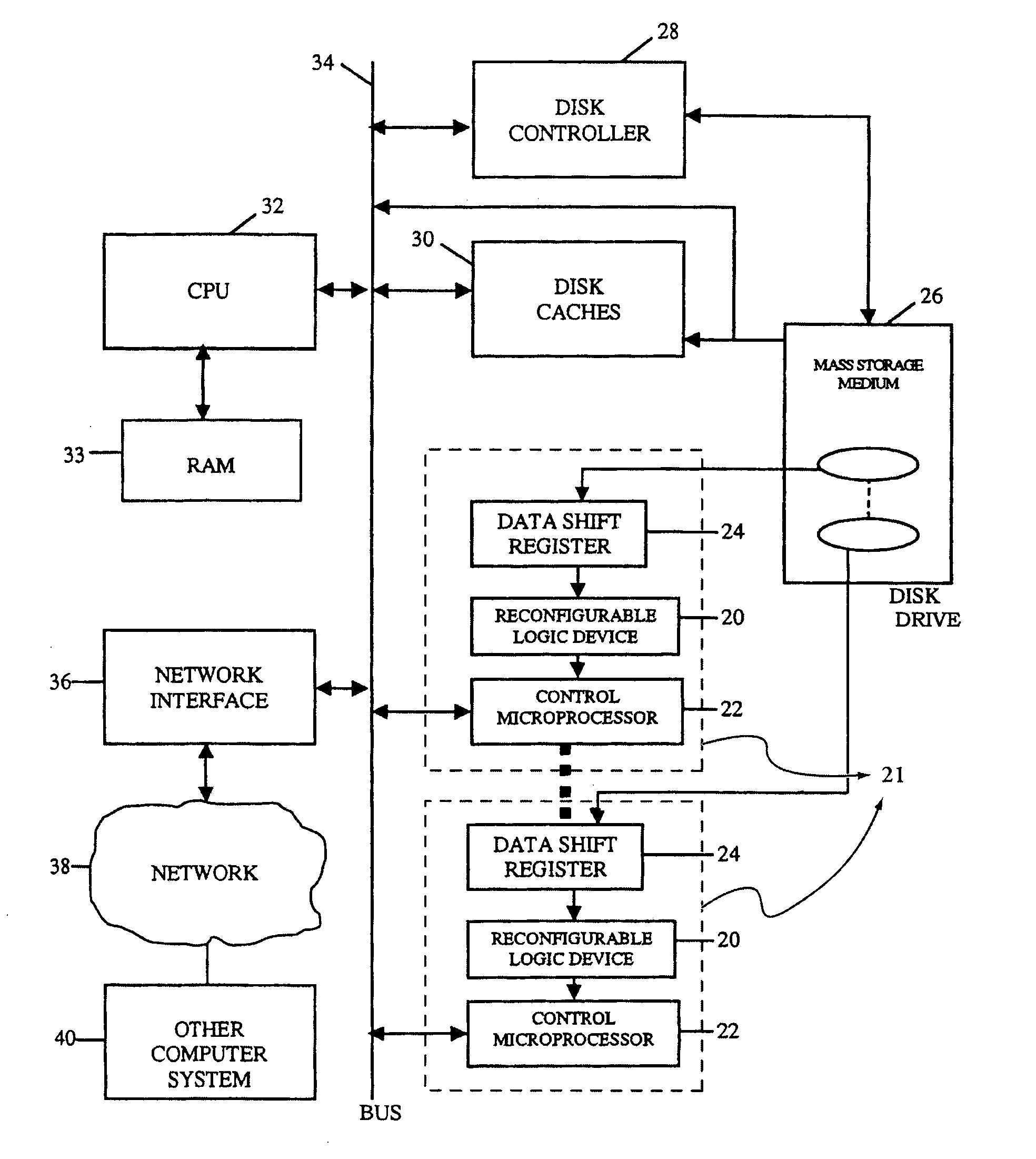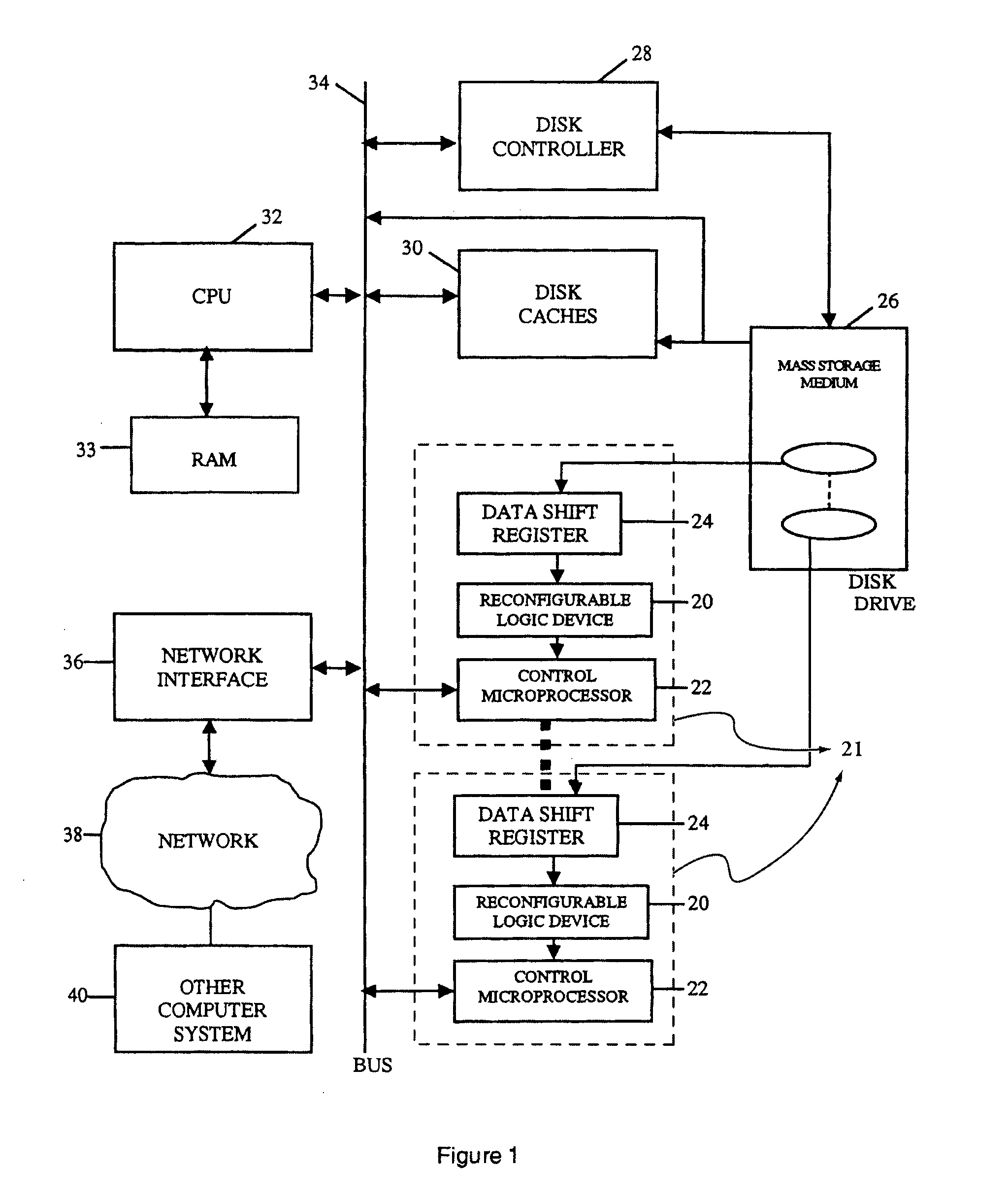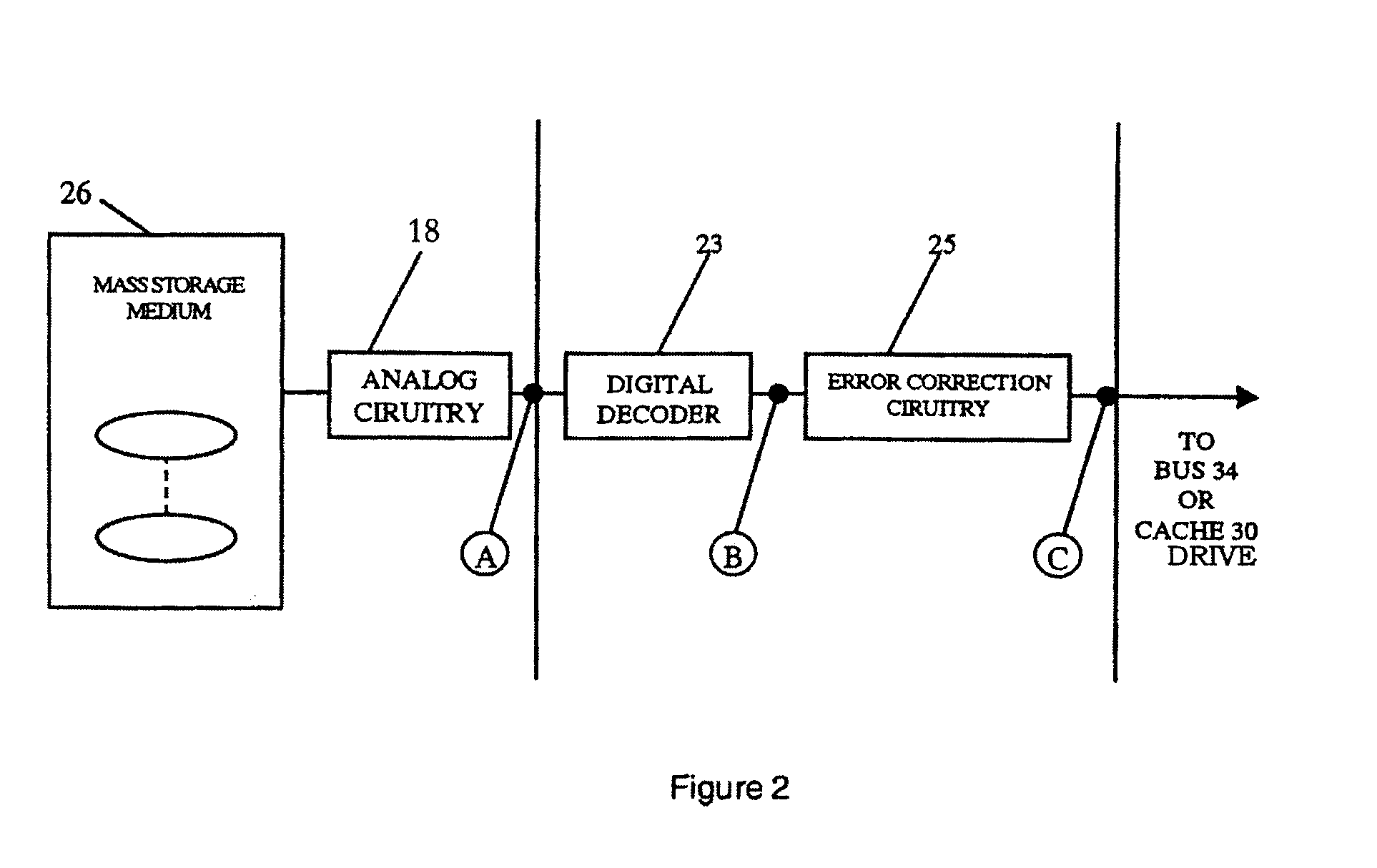Intelligent Data Storage and Processing Using FPGA Devices
a data storage and intelligent technology, applied in data processing applications, program control, instruments, etc., can solve the problems of inability to design a search which will yield a manageable result, inability to meet the needs of users, etc., to achieve enhanced data security, high speed, and high speed
- Summary
- Abstract
- Description
- Claims
- Application Information
AI Technical Summary
Benefits of technology
Problems solved by technology
Method used
Image
Examples
Embodiment Construction
peration during the combinatorial and latch part of the clock cycle, respectively, of the system of FIG. 1;
[0049]FIG. 19 is the table of FIG. 15 representing a particular sequence matching example;
[0050]FIG. 20 is a block diagram of the systolic array architecture of FIG. 16 for the example of FIG. 19;
[0051]FIGS. 20, 21 and 22 are block diagrams of the systolic array architecture of FIG. 20 in operation during the combinatorial and latch part of the clock cycle, respectively, of the system of FIG. 1;
[0052]FIG. 23 is a block diagram of one embodiment of a systolic array architecture that can be used by the inventive system in performing image matching operations;
[0053]FIG. 24 is a block diagram of another arrangement for the systolic array architecture in performing image matching operations;
[0054]FIG. 25 is a block diagram of one embodiment of an individual cell of the systolic array shown in FIG. 23;
[0055]FIG. 26 is a block diagram of another embodiment of an individual cell of the...
PUM
 Login to View More
Login to View More Abstract
Description
Claims
Application Information
 Login to View More
Login to View More - R&D
- Intellectual Property
- Life Sciences
- Materials
- Tech Scout
- Unparalleled Data Quality
- Higher Quality Content
- 60% Fewer Hallucinations
Browse by: Latest US Patents, China's latest patents, Technical Efficacy Thesaurus, Application Domain, Technology Topic, Popular Technical Reports.
© 2025 PatSnap. All rights reserved.Legal|Privacy policy|Modern Slavery Act Transparency Statement|Sitemap|About US| Contact US: help@patsnap.com



